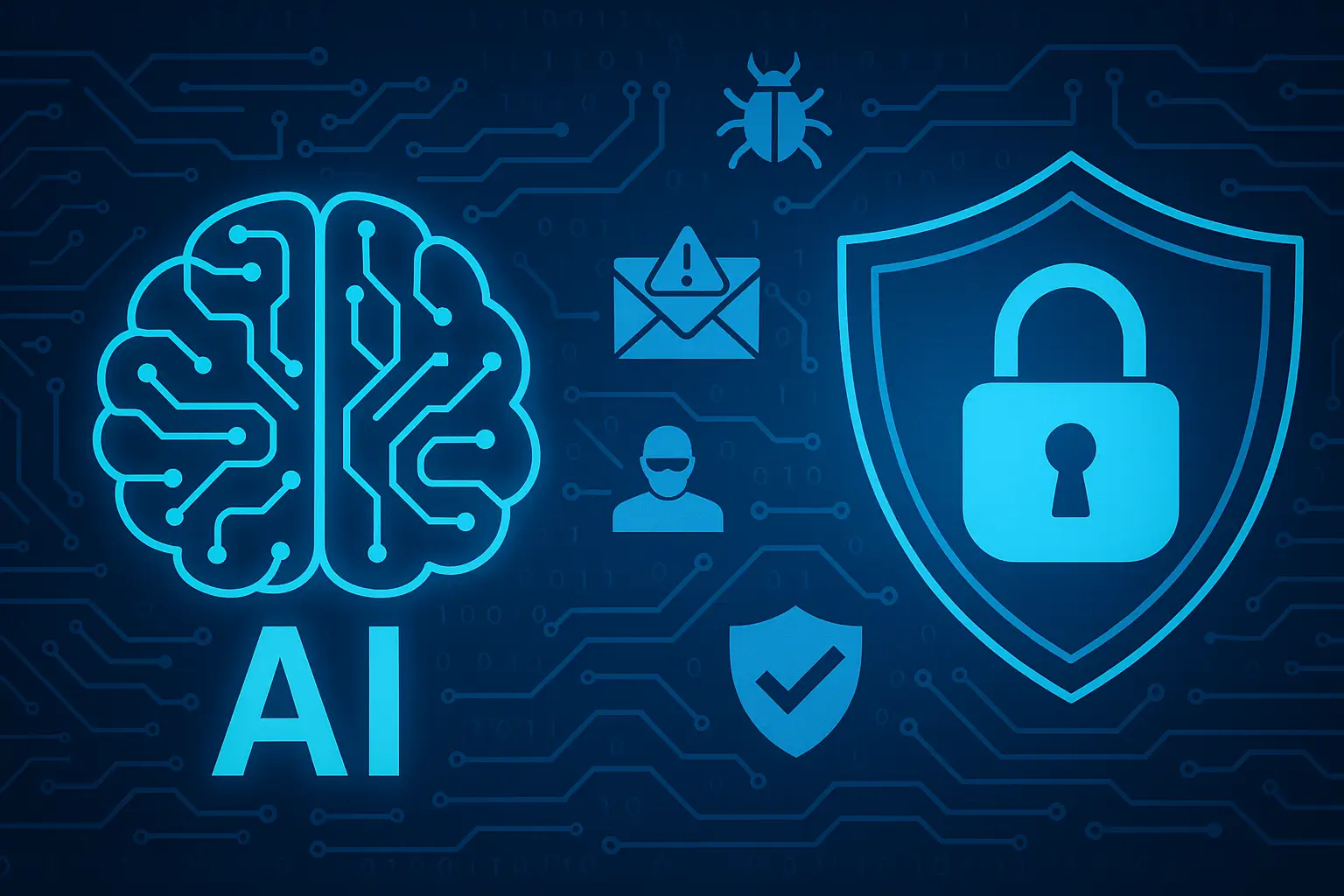As our world becomes increasingly digital, the threat of cyberattacks continues to grow in both frequency and complexity. From ransomware to phishing and data breaches, organizations face a constant battle to protect their systems and data. Enter Artificial Intelligence (AI)—a game-changing force that is transforming how we defend against cyber threats.
This article explores how AI is revolutionizing cybersecurity by detecting threats faster, responding more efficiently, and staying one step ahead of cybercriminals.
Why Cybersecurity Needs AI
Traditional cybersecurity relies on rule-based systems and manual monitoring. While effective to some extent, these methods often struggle to keep pace with sophisticated and evolving threats. AI enhances cybersecurity by:
- Analyzing massive volumes of data in real time
- Identifying hidden patterns and anomalies
- Automating threat detection and response
- Adapting to new threats using machine learning
In short, AI brings speed, scale, and intelligence to cybersecurity operations.
AI-Powered Threat Detection
AI systems excel at detecting threats that would be invisible to traditional methods. Here’s how:
1. Anomaly Detection
Machine learning models are trained on normal network behavior and can quickly flag unusual activity, such as:
- Unusual login times or locations
- Unexpected data transfers
- Access to sensitive files by unauthorized users
This enables early detection of insider threats or compromised accounts.
2. Behavioral Analytics
AI analyzes user behavior to establish baseline profiles. If a user starts behaving differently—such as downloading large files or accessing new systems—it can trigger an alert.
3. Malware Detection
AI can detect new and unknown malware by analyzing file behavior, code structure, and delivery methods. This goes beyond traditional signature-based antivirus systems.
Automated Threat Response
AI doesn’t just detect threats—it can also respond to them:
- Isolating compromised devices from the network
- Blocking malicious IP addresses in real time
- Rolling back ransomware-encrypted files using backup snapshots
- Initiating incident response workflows
These automated actions reduce response time and limit the damage caused by cyberattacks.
Natural Language Processing (NLP) in Threat Intelligence
NLP allows AI systems to process and understand human language. In cybersecurity, this is used to:
- Scan news articles, blogs, and hacker forums for emerging threats
- Interpret threat intelligence reports and security advisories
- Automate analysis of phishing emails and malicious content
By gathering and synthesizing global threat data, AI helps organizations stay informed and proactive.
AI in Endpoint Security
Endpoint detection and response (EDR) systems use AI to monitor laptops, smartphones, and other devices. These systems:
- Detect suspicious processes and file changes
- Prevent data exfiltration
- Provide real-time alerts and forensic data
Popular AI-driven EDR platforms include CrowdStrike, SentinelOne, and Microsoft Defender for Endpoint.
AI for Identity and Access Management (IAM)
AI enhances IAM by:
- Verifying user identities using biometrics and behavioral data
- Adapting access privileges based on user behavior and risk
- Detecting account takeovers and privilege escalation attempts
This ensures that only authorized users access sensitive systems and data.
Cybersecurity Training and Simulation
AI powers realistic cyberattack simulations for training purposes. Organizations use these to:
- Test employee responses to phishing attempts
- Simulate ransomware or denial-of-service attacks
- Train security teams in incident response and recovery
AI can also personalize training content based on user knowledge gaps and risk profiles.
Benefits of AI in Cybersecurity
1. Faster Detection and Response
AI processes data at machine speed, significantly reducing the time to identify and mitigate threats.
2. Reduced False Positives
Traditional systems often flood analysts with false alerts. AI improves accuracy by learning which events truly signal threats.
3. Scalability
AI can monitor large, complex networks with thousands of endpoints without human fatigue.
4. Predictive Defense
AI not only reacts to attacks—it can predict vulnerabilities and recommend preemptive action.
5. Cost Savings
By automating routine tasks, AI frees up cybersecurity professionals to focus on critical decisions and strategy.
Challenges of Using AI in Cybersecurity
Despite its power, AI comes with its own set of challenges:
1. Adversarial AI
Hackers can use AI too. Adversarial attacks involve feeding misleading data to AI models to trick or disable them.
2. Data Privacy
AI systems require access to sensitive data. Ensuring that this data is protected and used ethically is crucial.
3. Bias and Inaccuracy
Poorly trained models can make mistakes or unfair decisions, especially in access control or threat classification.
4. High Implementation Costs
Advanced AI cybersecurity platforms can be expensive and require skilled professionals to manage them.
5. Over-Reliance on Automation
While AI is powerful, it’s not infallible. Organizations must balance automation with human oversight.
The Future of AI in Cybersecurity
As threats evolve, so will AI capabilities. Future trends include:
- Self-healing systems that detect and repair vulnerabilities autonomously
- Explainable AI that shows how decisions are made, increasing trust and transparency
- Zero Trust architecture enhanced by continuous AI-driven verification
- Federated learning to train models across organizations without sharing raw data
- Integration with quantum computing for advanced encryption and threat modeling
AI will also play a role in global cybersecurity collaboration, helping nations and organizations share threat intelligence and coordinate responses.
Final Thoughts: Smarter Defense in a Digital World
Artificial Intelligence is becoming the cornerstone of modern cybersecurity. By enabling faster detection, automated response, and predictive insights, AI empowers organizations to stay ahead of increasingly sophisticated cyber threats.
However, successful implementation requires more than just technology—it demands ethical design, skilled professionals, and a strong security culture. In the battle for digital safety, the alliance between human intelligence and artificial intelligence will be the key to victory.
